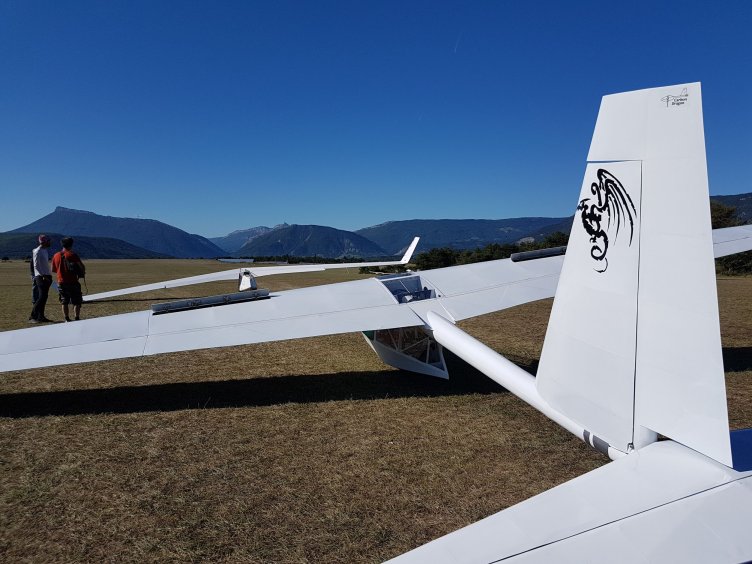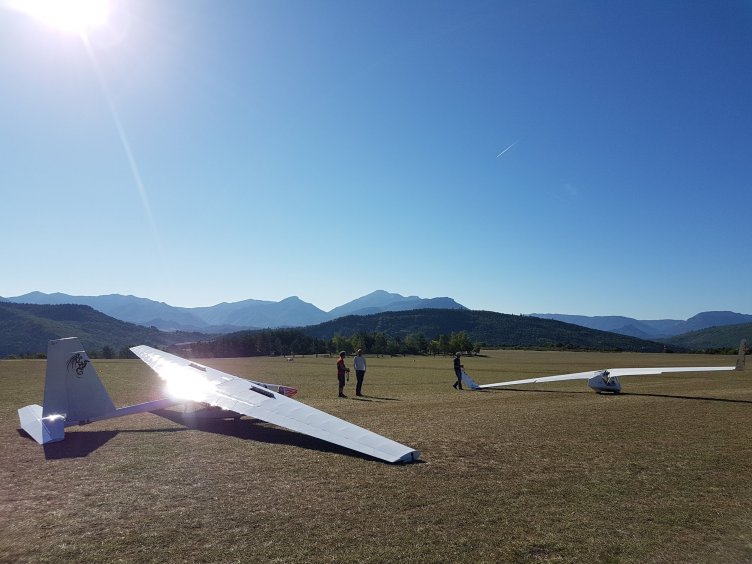Hi Rick,
Flying over here just to see me - that's game of you!!! Actually it's just as well your passport scrubbed the mission - the weather here has been very trying, with long spells of Mistral (very strong northerlies) keeping both the Swifts, Archaeopteryxs and me on the ground for days at a time. It's very frustrating, but I guess it's the end of the season here. I hope you'll get your passport renewed for next summer - I think I know someone with a Carbon Dragon you can borrow... if you can prize him out of the pilot pod!

I decided I'd better do a few car tows before aero-towing, to get a feel for the glider, as I haven't aero-towed for a couple of years (when I did my sailplane training). The ground-skimming bungee hops I did in Ireland weren't really long or high enough to get a proper feel for the controls. As it turned out, I needn't have worried - the CD is just a dream on tow. Very light and responsive, and easy to keep on axis behind the trike. The controls are all very effective and sensitive to the smallest input when on tow.
The glider was still quite nose heavy on the first high tow and I was pulling back all the time. The slightest lapse in concentration during that flight resulted in an alarming nose dive... as you'll see in the next video!
Like you, I find that opening the air brakes results in a pitch-down movement, but it was easy to control even with the already nose heavy glider. They are also savagely effective!!! 1/2 open gives me around -1.5m/s sink, and fully open finds me plummeting at -2.7 to -3m/s - like a manhole cover in free-fall! I haven't played with the air brakes too much on approach yet (just opened them a little to get a feel for them on downwind) and I need to practice precision landings with them so I can put down in the rather smaller fields we have in Ireland.
I did not experience the odd stick forces in roll that you described after your first flights (the stick wanting to fall left or right of center when rolling), so that must have been an artifact of your build. The stick force in roll on mine are smooth, left and right, with slightly increased resistance as you reach the extremities of roll. Did you check your roll bell-crank and push rods against the plans after your first flights? The spring loaded rod-end ball fittings are at a slight angle to the push rods themselves - I wonder if that may be contributory - or is there any flexing in your push rods? I made mine from aluminium tube with a continuous length of 6mm threaded rod bent to shape inside. They're heavier than they need to b, but stiff and stable in profile!
All the best,
Phil.

